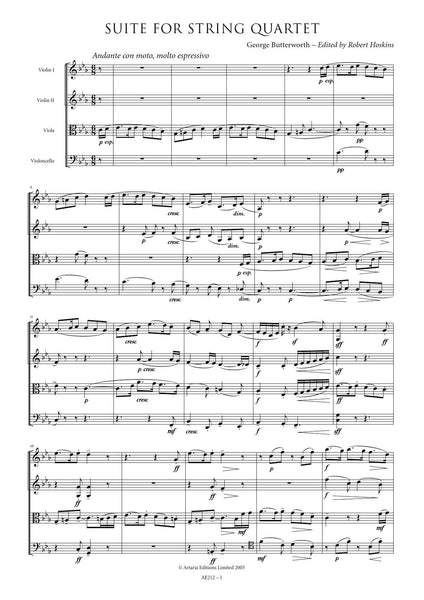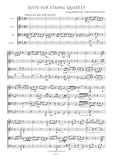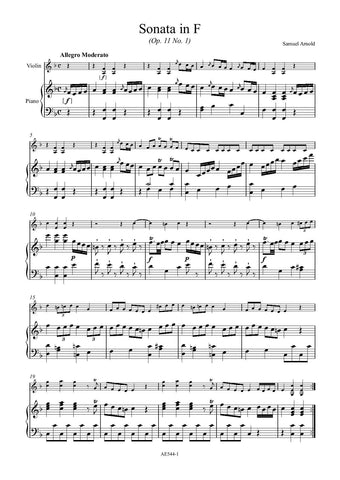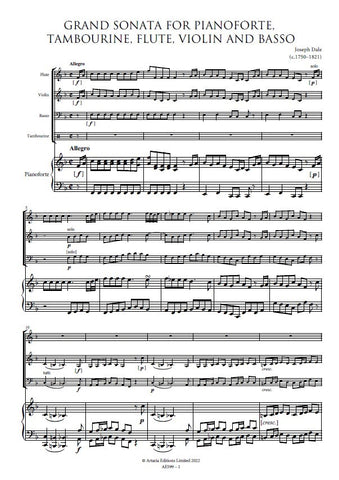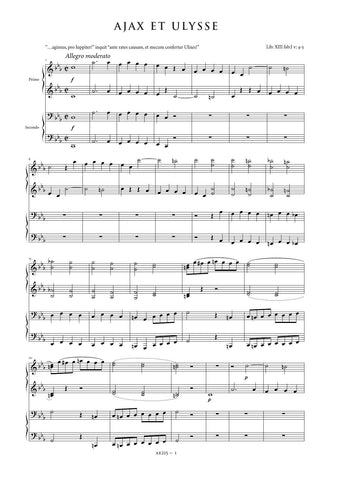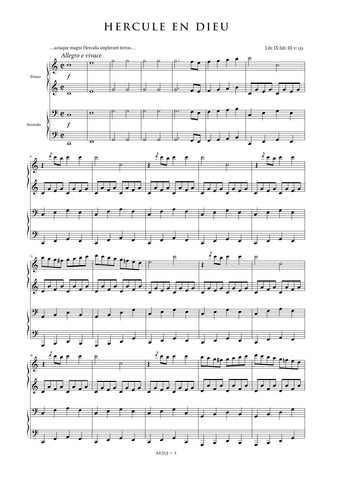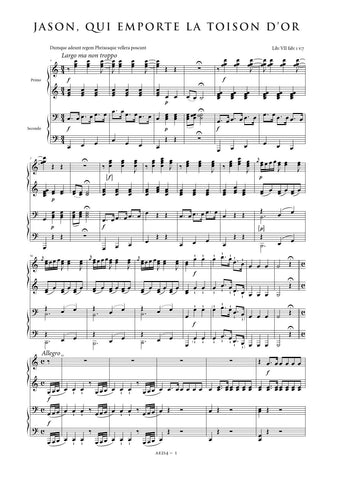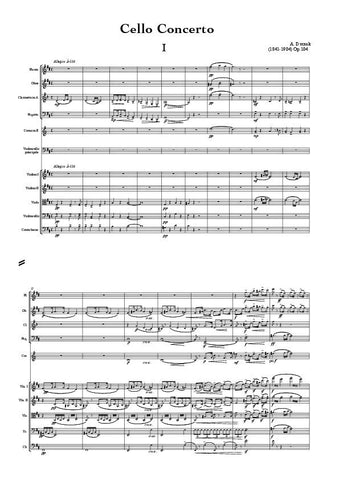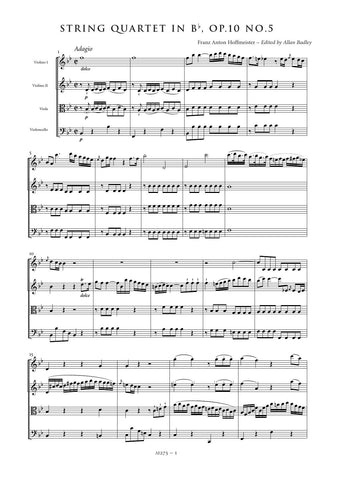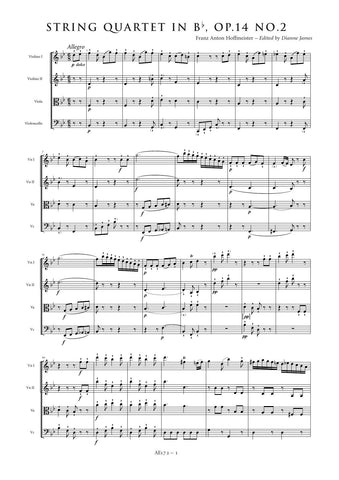Butterworth, George: Suite for String Quartet (AE212) – sheet music
Previous Product Next Product
Description |
Butterworth, George (1885-1916)
|
||||||||||||||||
Details |
The Suite for String Quartet was probably written when Butterworth was a student of Wood at the Royal College of Music in 1910-11 but there is no record of any performance during the composer's lifetime. This is the only one of Butterworth's instrumental works with a multi-movement structure and, perhaps coincidentally, the only one not reliant on tone poetry. The music of the Suite is informed by the melodic contours of folksong and the rhythm of folk-dance with nevertheless contemporary developments in chromaticism and tone-colour. An important aspect of the compositional procedure is the way Butterworth creates a paradigm of a certain kind of inclusiveness: the opening viola theme, for example, is integral and organic, and ideas throughout the work seem to either grow out of it or derive from it; and the theme unites, as its explicit return at the close makes clear. This structural mode of containment illuminates Butterworth's characteristic pastoral strategy where integrated folk-style serves to hold back the force of time and history, whilst the opposed inclinations, sounded in sudden cross-current passages of rhapsodic chromaticism, encode imminent danger—spoliation threatening the music's protected isolation. Penetrating the suite's pastoral tropes of forest murmurs and evocation of pleasant landscapes, melancholia and thoughts of loss signify leave-taking, darkening the arc of the music so that the closing paragraphs issue a muted metamorphosis of the opening idyll. The final cadence bespeaks mortality, summoning nightfall in Arcadia and, by association, turning the lights out over Europe. The present edition uses as copy-text George Butterworth's original holograph ink score, the only surviving source. The manuscript is preserved in the Bodleian Library under the call number MS Mus. c. 247. The style and notation of the articulation and dynamic markings have been standardised throughout, and courtesy accidentals have been added silently. Editorial dynamic and articulation markings are shown in brackets, and editorial slurs and phrase marks are dotted. The manuscript indicates that Butterworth was a meticulous worker. Two deletions interestingly reveal his first thoughts: measures 70-76 in the first movement are originally less pliable rhythmically and harmonically, and the closing cadence of the finale is more compressed. The score is published by permission of the Bodleian Library, Oxford. Robert Hoskins |
||||||||||||||||
Score Preview (best viewed in full screen mode) |
|||||||||||||||||




